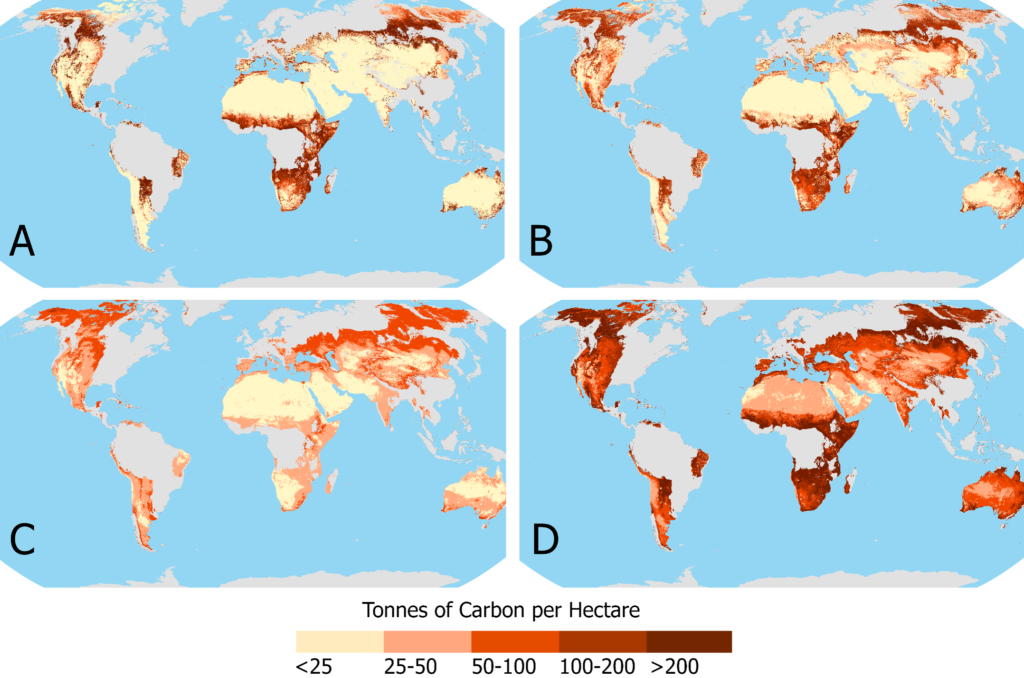In preparation for the UN Climate Change Conference (COP26), Niall Hanan and collaborators reviewed the current literature on dryland systems and their role in future climate management. Drylands cover around 40% of the Earth’s land surface, but that percentage is expected to grow as the bioclimatic conditions that support drylands have become more prevalent. In fact, drylands already have expanded. From 1950-2000, scientists looked at long-term climate records and found that drylands increased in size on all continents, except for Europe and South America.
With the increasing dominance of drylands on our global landscape, accurately accessing their carbon reserves is important. Historically, carbon was vastly underestimated in drylands due to the wrong assumption that tree and grass biomass and soil carbon in drylands is negligible. However, new estimates that account for vegetation suggest that drylands contain ~30% of global carbon when measuring reserves stored in plants (above and below ground) and surface soils. Although not exact, this carbon approximation demonstrates the significance of dryland carbon reserves, and the necessity for them to be considered in global carbon management plans.
Short-term fluctuations in dryland carbon emissions are most affected by variability in rainfall, primary production, and wildfires. But ultimately, long-term sequestration will depend on the capacity for carbon storage in vegetation and soil. In most tropical and temperate drylands, increased carbon storage capacity will be correlated with increased water availability. Predicting changes in aridity in the years to come will be difficult, however, since while temperatures will increase, future rainfall patterns will vary in drylands around the world.
Jornada long-term datasets support our understanding of carbon dynamics in dryland vegetation and soils and changes associated with shrub encroachment and soil degradation. Future management of carbon in the drylands will need to consider local ecological contexts that can enhance carbon in vegetation and in soil organic and inorganic carbon, while ensuring ecological integrity of dryland systems and provision of critical services to dryland populations. To read the full article, click here.
